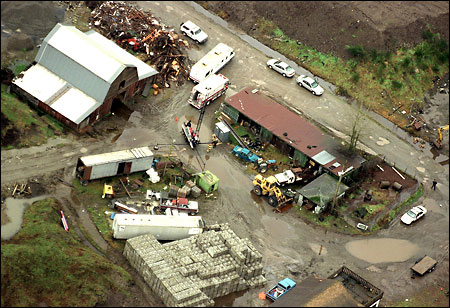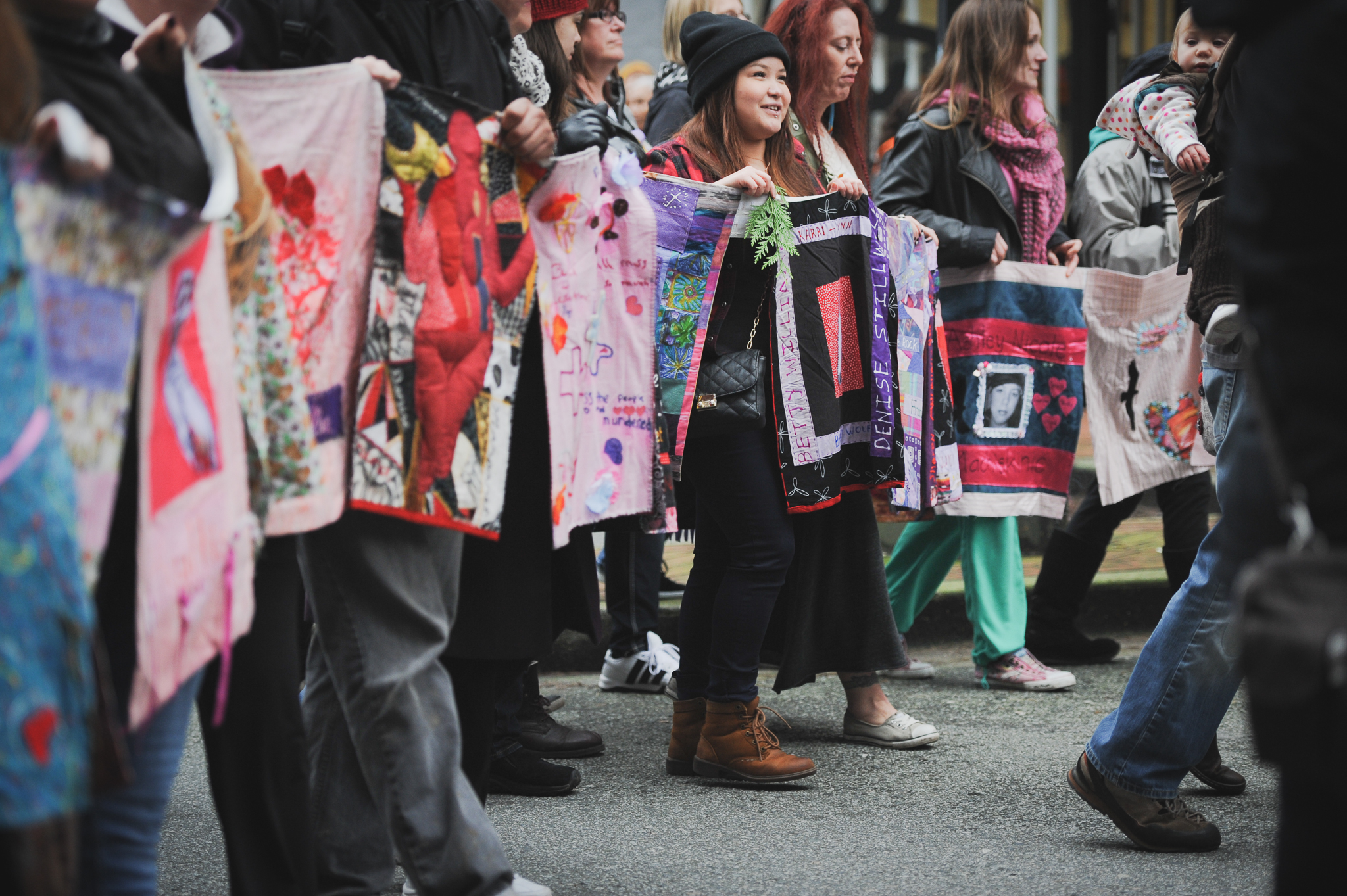In 2001, Robert Pickton was charged with murdering 26 women at his pig farm in Port Coquitlam, BC. He was convicted on six charges and sentenced to life in prison. Pickton claimed to have killed 49 women. His case was the largest serial killer investigation in Canadian history. It was also a flash point in the wider issue of missing and murdered Indigenous women and girls. In 2012, a government inquiry found that “blatant failures” by police led to a “tragedy of epic proportions.”
This article contains sensitive material that may not be suitable for all audiences. This article is a plain-language summary of the Robert Pickton Case. If you are interested in reading about this topic in more depth, please see our full-length entry: Robert Pickton Case.

Pickton Pig Farm
Robert William “Willie” Pickton was born in 1949. He was raised on a family-owned pig farm in Port Coquitlam, BC. Pickton ran a small livestock operation there. He was socially awkward and was known to act strangely. He lived alone in a trailer home on the farm.
In 1996, Pickton and his brother started a registered charity. It was called the Piggy’s Palace Good Times Society. It held parties to raise funds for groups in need. As many as 1,700 people would attend these parties. Among them were bikers and sex trade workers from the Downtown Eastside. Neighbours complained of drug use and noise. In 2000, the City of Port Coquitlam shut Piggy’s Palace down.
Disappearances from the Downtown Eastside
Vancouver’s Downtown Eastside is known for its high rates of poverty, homelessness, open drug use and prostitution. Pickton was familiar with the Downtown Eastside. He disposed of animal parts at a rendering plant there. He would often cruise the ten-block strip called the Low Track. He would offer women money and drugs. He often took women back to his farm.
Between 1978 and 2001, at least 65 women were reported missing from the Downtown Eastside. Many people in the area were estranged from their families. Disappearances often went unnoticed.

Of the 26 disappearances officially linked to Pickton, one occurred in 1995; one in 1996; six in 1997; four in 1998; five in 1999; two in 2000; and seven in 2001. Many missing women were not officially linked to Pickton, due to a lack of evidence.
Over the years, the rate of disappearances increased. Rumours of a serial killer began to spread. Sex trade workers began walking the Low Track in groups; they would write down the licence plate numbers of cars that picked women up. But the disappearances continued.
The Vancouver police refused to say that a serial killer was at work. There were no bodies and an investigation would have strained police resources. Many complained of police apathy. The Vancouver Sun accused the police of not pursuing crimes committed against sex trade workers.
Many of the missing women were also Indigenous. The Pickton case focused public attention on the wider issue of missing and murdered Indigenous women and girls. A federal inquiry into the issue began in 2016.

Missed Opportunities
On 22 March 1997, a woman Pickton had taken to his farm fought back when he tried to handcuff her. Pickton was arrested and charged with attempted murder, assault with a weapon, and forcible confinement. But the charges were dropped. The woman was not seen as a good witness due to drug addiction. Pickton claimed she was a hitchhiker who had attacked him.
In spring 1999, an informant told the Vancouver police that a friend, Lynn Ellingsen, had seen a woman’s body hanging at Pickton’s farm. Ellingsen was questioned by police and denied the story. Much later, she confessed that she had in fact seen the body. She did not report it because she feared Pickton and depended on him for drugs.
Early in 1999, Bill Hiscox informed the RCMP that a friend of Pickton had told Hiscox that she had seen women’s clothing, purses and ID papers at the pig farm. It was the second time that Hiscox, who worked for the Picktons, had contacted police. But they could not obtain a search warrant based on hearsay. They required an eyewitness report or physical evidence.
Arrest
In February 2002, a former truck driver for the Pickton family told the RCMP that he had seen illegal guns in Pickton’s home. The police were able to get a search warrant. On 5 February, officers raided the pig farm. They found several illegal and unregistered guns. They also found items linking missing women to the property. They found women’s clothing and shoes, jewelry, and an asthma inhaler prescribed to Sereena Abotsway, a missing woman. The blood of another, Mona Wilson, was found in a motorhome at the farm. On 22 February 2002, Pickton was re-arrested and charged with two counts of murder. A total of 26 murder charges were laid against him.
While Pickton was being held in jail in Surrey, he shared a cell with an undercover RCMP officer. Pickton thought the officer was another detainee. Pickton told the officer he had murdered 49 women, and that he had wanted to make it 50.
Meanwhile, the pig farm became the largest crime scene in Canadian history. Police took 200,000 DNA samples. Heavy equipment was used to sift through 383,000 cubic yards of soil in search of human remains. The cost was nearly $70 million.
Trial and Imprisonment
Pickton’s trial on the first six charges began on 22 January 2007. On 9 December 2007, he was found guilty by a jury on six counts of second-degree murder. He was sentenced to life in prison. He was granted no chance of parole for 25 years.
Pickton claimed to have killed 49 women. But he was only charged with the murders of 26 who were identified with evidence found on the farm. Crown prosecutors thought they might try Pickton on the other 20 charges. But they later decided not to because Pickton's punishment was already the maximum possible.
Inquiry
In 2010, a BC government inquiry began. Its goal was to examine how the Pickton case was handled by authorities. The inquiry issued its final report, titled Forsaken, in December 2012. The report said that “blatant failures” by police had led to a “tragedy of epic proportions.” The failures included inept investigative work, as well as prejudice against sex trade workers and Indigenous women.
The inquiry issued 63 recommendations. Among them were the creation of a Greater Vancouver police force to make police co-operation more unified; adequate funding for emergency shelters; and compensation for children of the missing women.
The Vancouver Police Department made many changes to the way it searches for missing persons. The missing persons unit is now a regular part of the police department; investigations are begun without delay; family members are advised and consulted before the release of information; and the case file is kept open until the missing person is located.
Death of Robert Pickton
On 19 May 2024, Robert Pickton was attacked at a maximum-security prison in Quebec. Martin Charest, a 51-year-old fellow inmate, stabbed Pickton in the head with a broken broom or broom-like handle. The 74-year-old Pickton was put in a medically induced coma. He died on 31 May. Charest was charged with first-degree murder in Pickton's death on 3 July 2025.
See also Highway of Tears; Women’s Memorial March.

 Share on Facebook
Share on Facebook Share on X
Share on X Share by Email
Share by Email Share on Google Classroom
Share on Google Classroom





